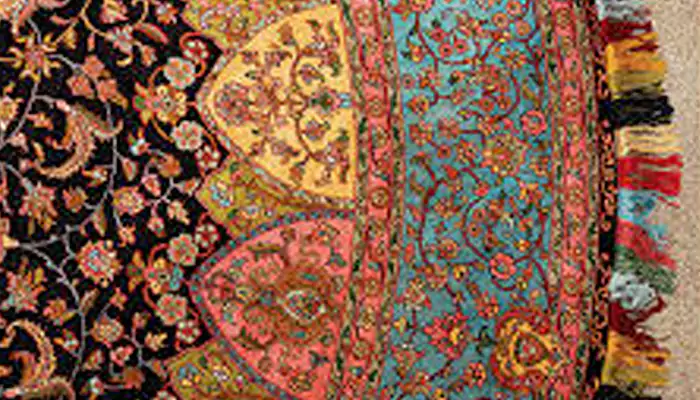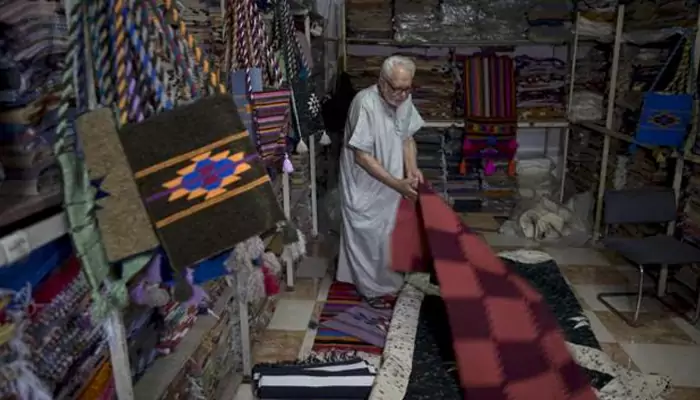All You Need To Know About The Art Of Handweaving Carpets In Tamil Nadu
- Rinks
- 1 year ago
- 4 minutes read

Discover the revival of handweaving carpets in Tamil Nadu.
Tamil Nadu, known for its rich cultural heritage and traditional crafts, is witnessing a remarkable revival of handweaving carpets. This ancient craft, once on the brink of fading into obscurity, is now experiencing a renaissance, thanks to a renewed interest in traditional craftsmanship and sustainable practices. The resurgence of handwoven carpets from Tamil Nadu is not just a testament to the state's artistic legacy but also a reflection of the growing appreciation for slow fashion and artisanal products. This article explores the history, techniques, and modern-day revival of carpet weaving in Tamil Nadu.
A rich history of handweaving

Handweaving carpets in Tamil Nadu dates back centuries, with its origins deeply rooted in the region's history. Traditionally, carpets were woven using natural fibres such as cotton, wool, and silk, dyed with natural dyes extracted from plants and minerals. The designs often depicted local flora and fauna, geometric patterns, and motifs inspired by temple architecture.
Decline and challenges
The advent of industrialization and the rise of machine-made carpets posed significant challenges to traditional handweaving practices. The painstakingly slow process of handweaving could not compete with the speed and efficiency of mechanised production. As a result, many weavers abandoned their craft, and the once-thriving industry began to dwindle.
The weaving process

Handweaving carpets is a labour-intensive process that requires exceptional skill and precision. The weavers use a loom to interlace the warp and weft threads, creating intricate patterns and designs. Each carpet can take several months to complete, depending on its size and complexity.
Materials and dyes
The choice of materials and dyes plays a crucial role in the quality and appearance of handwoven carpets. Weavers in Tamil Nadu traditionally use natural fibres and dyes, ensuring the carpets are eco-friendly and sustainable. The vibrant colours achieved through natural dyes add a unique charm to the carpets, setting them apart from their machine-made counterparts.
Unique designs
The designs of Tamil Nadu carpets are a blend of traditional motifs and contemporary aesthetics. While some weavers stick to age-old patterns, others experiment with modern designs to cater to changing tastes and preferences. This fusion of tradition and innovation has helped in attracting a broader audience and reviving interest in handwoven carpets.
The fashion revival
In recent years, there has been a growing trend towards sustainable and artisanal products, driven by a desire to support traditional crafts and reduce the environmental impact of mass production. Handwoven carpets from Tamil Nadu have gained popularity among interior designers, fashion enthusiasts, and conscious consumers who appreciate the craftsmanship and uniqueness of these products.
Government and NGO initiatives
The revival of handweaving in Tamil Nadu has also been supported by various government and non-governmental initiatives. These efforts aim to provide financial assistance, training, and market access to weavers, helping them sustain their craft and improve their livelihoods. By promoting handwoven carpets on national and international platforms, these initiatives have played a significant role in boosting the visibility and demand for these artisanal products.
Collaboration with designers
Collaboration between traditional weavers and contemporary designers has further fuelled the revival of handwoven carpets. Designers bring fresh perspectives and innovative ideas, while weavers contribute their expertise and traditional techniques. This synergy has resulted in the creation of unique, high-quality carpets that appeal to modern consumers while preserving the essence of traditional craftsmanship.
The revival of handweaving carpets in Tamil Nadu is a testament to the enduring appeal of traditional crafts and the growing appreciation for sustainable, artisanal products. This resurgence not only preserves a vital part of Tamil Nadu's cultural heritage but also provides a sustainable livelihood for skilled artisans. As the demand for handwoven carpets continues to grow, it is heartening to see this ancient craft thriving in the modern world, weaving together tradition and innovation into beautiful works of art.










